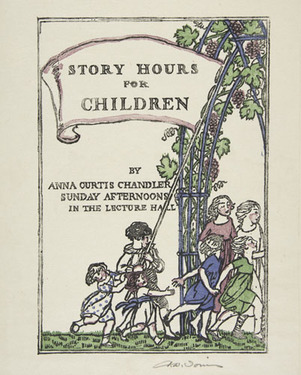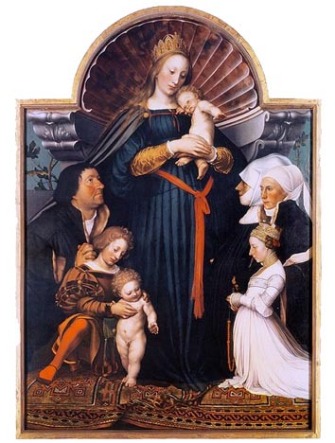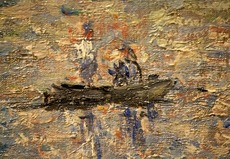Back to the website of the Metropolitan Museum of Art,* I discovered something quite shocking — and indicative — about its history with women artists.
Who would you suppose was chosen to receive the first solo exhibition of works by a female artist? Note that this took place in July, 1921 — 90 years ago.
Are you guessing Mary Cassatt? Artemisia Gentileschi? Judith Leyster? Angelica Kauffman? Elisabeth-Louise Vigée-Lebrun? Julia Margaret Cameron? Berthe Morisot?
Nope.
 According to a “Today in History” post on the Met site, the first solo show there given to a woman opened on July 15, 1921, and featured Florence Wyman Ivins. Never heard of her? Perhaps that’s because she made watercolors, drawings and woodcuts for children, including the Met’s story hours. Her works were shown in the Met’s Education Department, not in its galleries. And she was “family,” so to speak. Per the website post:
According to a “Today in History” post on the Met site, the first solo show there given to a woman opened on July 15, 1921, and featured Florence Wyman Ivins. Never heard of her? Perhaps that’s because she made watercolors, drawings and woodcuts for children, including the Met’s story hours. Her works were shown in the Met’s Education Department, not in its galleries. And she was “family,” so to speak. Per the website post:
Florence Wyman (American, 1881-1948) was raised in Evanston, Illinois, until her parents separated and she moved to France with her mother and a sister. She attended school in Paris and later studied at The Art Students League in New York City. At twenty-nine, when she married William Mills Ivins Jr., she was already working professionally in watercolor portraiture and book illustration. [Her husband, a Harvard graduate, lawyer, and a member of the Grolier Club, later held several positions at the Met: Curator of Prints (1916-1946), Assistant Director (1933-1939), Acting Director (1939-1940), and Counselor (1940-1946).]
Boldface mine, but let’s continue:
For a number of years, Florence Ivins designed the posters for the Museum’s Story Hours for Children program, as well as the covers of the Museum’s Children’s Bulletin, and her work was always well received….
You can read the rest here. A sample of her work is posted above. It speaks volumes that the Met chose an illustrator, rather than a painter or other kind of fine artist, for its first female solo show, someone related to one of its curators, and still showed her work out of the mainstream galleries.
So when did other American museums start to showcase work by women? The Met says this:
…the Met was not the first American museum to present a solo exhibition of work by a woman: the Museum of Fine Arts, Boston, presented its first such exhibition in 1882; the Art Institute of Chicago in 1887; and the Brooklyn Museum of Art in 1913. (The Philadelphia Museum of Art joined this list in 1927; The Wadsworth Atheneum in 1937.)
It did not identify the women chosen. But here is a long list of artists that any museum can choose from. (It does not, by design, include contemporary artists.) Wikipedia also has a list.
So when did the Met give a show to a woman in its real galleries? We don’t know.
Lest readers misinterpret, I’m not advocating for an equal number of shows by male and female artists — over time, maybe, but it would be impossible for most of art history. But women artists ought to be more accepted ss artists, to be judged by the same aesthetic and conceptual standards as men. And that may require a second look at women artists of the past.
Photo Credit: Courtesy of the Metropolitan Museum of Art
*I consult to a foundation that supports the Met

 But this painting is also famous for its past, which involves cunning 17th century fakery, duped royalty, and dueling accounts more than two centuries later over which of two renderings was real and which a copy – all leading to a different renown: Holbein’s Madonna was the subject of what experts say was the first art historical conference.
But this painting is also famous for its past, which involves cunning 17th century fakery, duped royalty, and dueling accounts more than two centuries later over which of two renderings was real and which a copy – all leading to a different renown: Holbein’s Madonna was the subject of what experts say was the first art historical conference.
 The latest from Egypt has Prime minister Essam Sharaf reversing course, and cancelling his nomination of Abdel Fatah El-Banna to hold Egypt’s antiquities portfolio.
The latest from Egypt has Prime minister Essam Sharaf reversing course, and cancelling his nomination of Abdel Fatah El-Banna to hold Egypt’s antiquities portfolio. 
